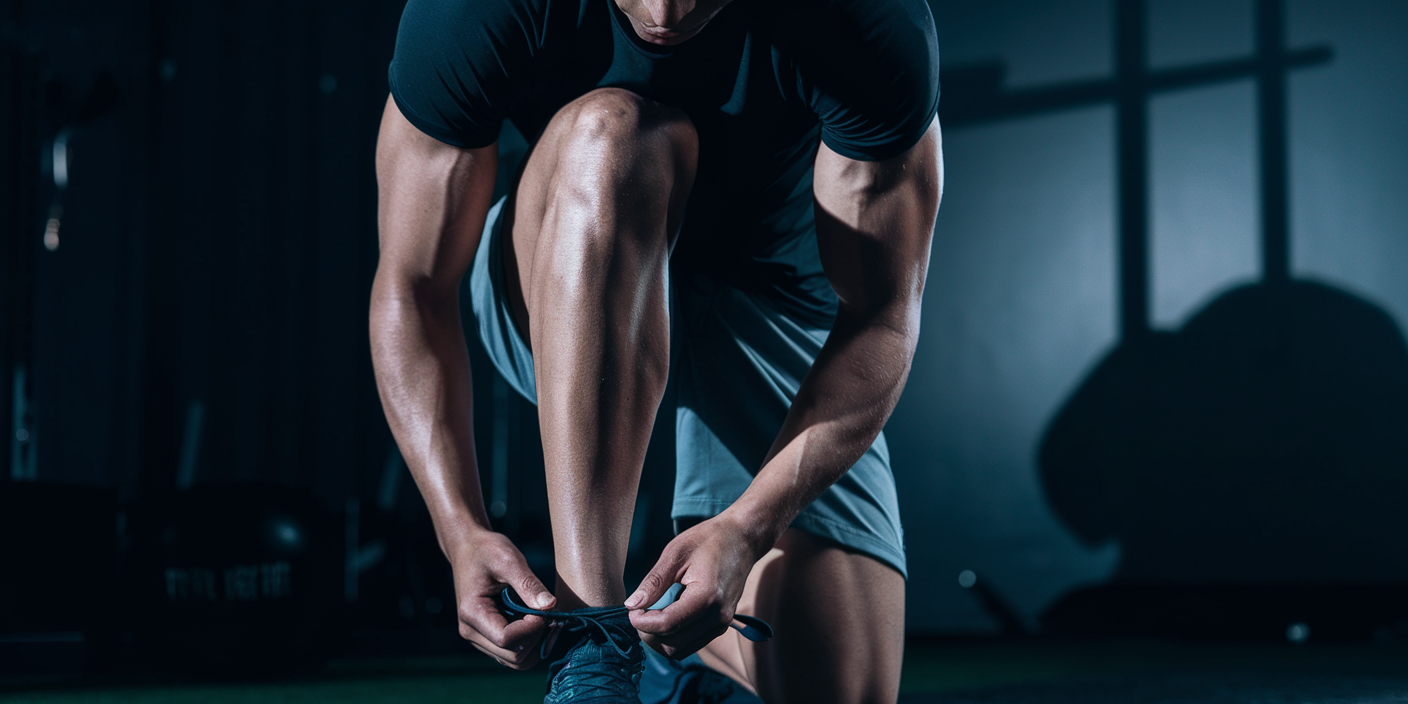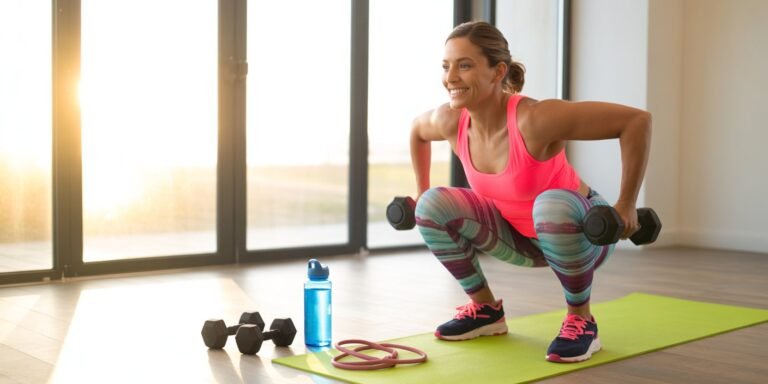If you’ve ever looked in the mirror and thought, “I wish I could lose a few pounds this week,” you’re not alone. Many people want to slim down quickly — whether it’s to feel more confident for a special event, jumpstart a long-term fitness plan, or simply break out of a rut.
The good news is, you can lose weight in just seven days if you focus on smart, science-backed strategies that help your body burn fat, reduce bloating, and boost energy.
Now, let’s be clear — losing a significant amount of fat overnight isn’t realistic, and extreme crash diets often do more harm than good.
But with the right balance of nutrition, hydration, movement, and mindset, you can safely shed water weight, cut unnecessary calories, and kickstart real fat loss — all in one week.
This isn’t about starving yourself or spending hours in the gym. Instead, it’s about making simple, powerful adjustments that your body responds to quickly.
By the end of the week, you’ll not only notice a difference on the scale, but you’ll also feel lighter, less bloated, and more in control of your eating habits.
In this guide, we’ll share 10 proven strategies that show you how to lose weight in a week — without gimmicks or unhealthy fads.
From meal planning tricks and metabolism-boosting foods to smarter hydration and easy fat-burning routines, these steps are designed for real results you can see and feel in just seven days.
Are you ready to finally take control of your weight and see quick progress? Let’s dive into the 10 strategies that actually work.
Quick note: This post may contain affiliate links, meaning we may earn a small commission if you make a purchase — at no extra cost to you. We only recommend weight loss tools, fitness gear, and nutrition resources that support fast, safe, and effective results backed by real strategies.
1. Create a Calorie Deficit
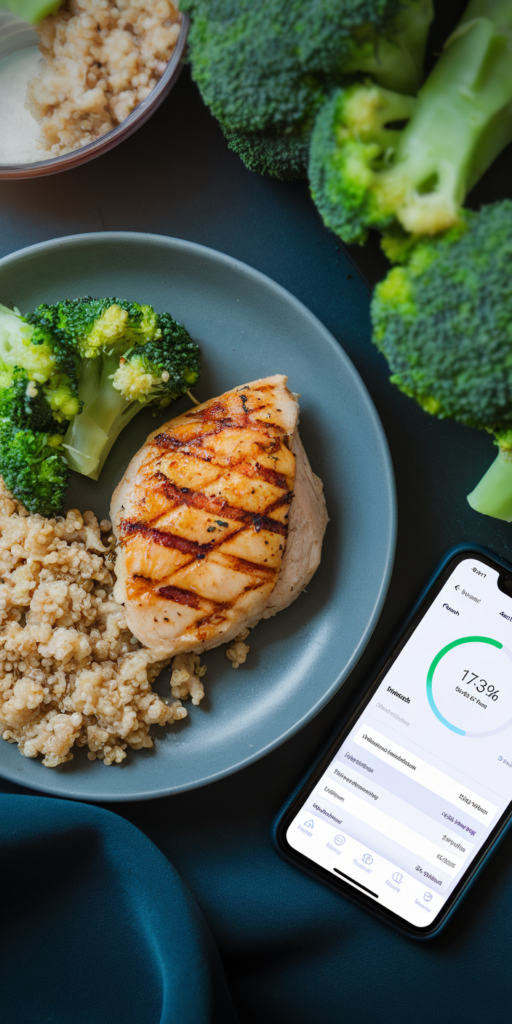
When it comes to losing weight, the foundation is simple: you need to burn more calories than you consume.
This doesn’t mean starving yourself or following extreme crash diets—in fact, those usually backfire. Instead, creating a sustainable calorie deficit means eating slightly fewer calories than your body burns each day while still giving it the nutrients it needs.
Think of your body like a budget: if you “spend” (burn) more than you “earn” (eat), you’ll naturally start using your stored energy—aka body fat—as fuel.
Even a small deficit of 300–500 calories per day can add up to steady, healthy weight loss of about 1–2 pounds per week.
How to Create a Calorie Deficit the Right Way
- Track Your Intake: Use a free app or food journal to monitor how many calories you’re eating. Sometimes we underestimate snacks, sauces, or drinks that add up quickly.
- Eat Nutrient-Dense Foods: Focus on lean proteins, vegetables, fruits, and whole grains. These foods keep you full but are lower in calories compared to processed options.
- Cut Liquid Calories: Soda, fancy coffee drinks, and even fruit juices can pack on calories without filling you up. Stick with water, tea, or black coffee.
- Don’t Slash Too Low: Dropping below 1,200–1,500 calories a day (depending on your body and activity) can slow your metabolism and cause fatigue.
Why This Works
A calorie deficit works because your body has to make up the energy gap by tapping into stored fat reserves. Pairing it with exercise boosts the effect, since workouts burn calories and build muscle—which in turn helps your body burn even more calories at rest.
Bottom line: Weight loss starts with a calorie deficit, but success comes from balance. Make small, sustainable changes that fit your lifestyle, and you’ll see lasting results without feeling deprived.

Etekcity Smart Rechargeable Scale for Body Weight, BMI, Fat, Muscle Mass, Digital Bathroom Scale with 13 Metrics, Secret Mode, Bluetooth Connect to Free Apps, Stealth Black
2. Prioritize High-Protein, Low-Carb Meals
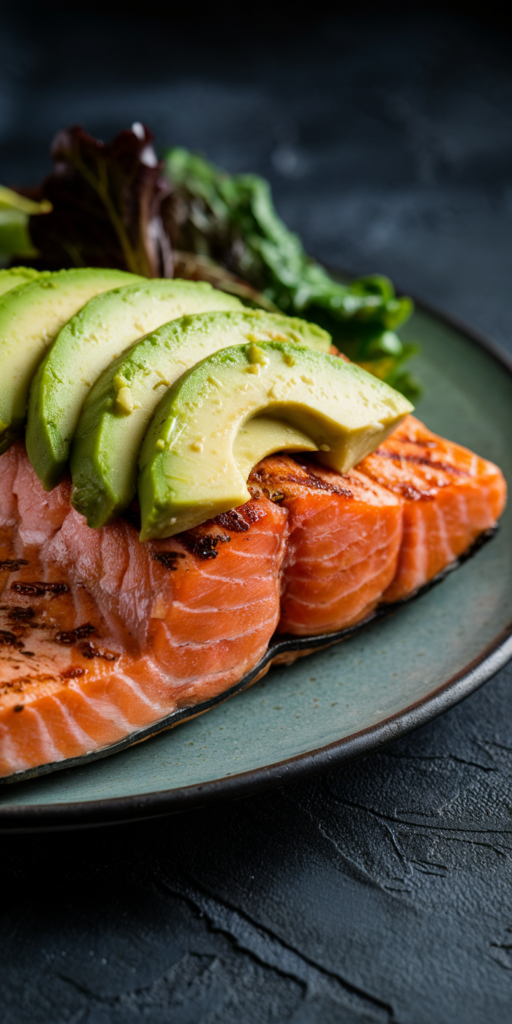
If you want to lose weight without constantly battling hunger, one of the most effective strategies is to center your meals around protein while keeping carbs in check.
Protein is the MVP of fat loss—it helps you stay full, supports lean muscle, and even slightly boosts your metabolism because your body burns more calories digesting protein compared to fats or carbs.
Carbohydrates aren’t the enemy (your body still needs them for energy), but the type and amount of carbs you eat matter.
Highly processed carbs—like pastries, chips, and white bread—spike your blood sugar quickly and then leave you crashing, which triggers cravings.
On the other hand, prioritizing lean proteins and pairing them with vegetables and healthy fats keeps your energy steady and helps you stick to your calorie deficit more easily.
Why Protein Should Be the Star of Your Plate
- Keeps You Satisfied: Protein slows digestion, which means fewer random snack cravings.
- Protects Muscle: When you’re in a calorie deficit, your body may burn muscle for energy. Protein protects that muscle while encouraging fat loss.
- Boosts Metabolism: The thermic effect of food (TEF) is higher with protein—your body uses up to 25–30% of protein calories just to digest it, compared to only 5–10% for carbs.
- Balances Hormones: Protein-rich meals help regulate ghrelin (the hunger hormone) and boost satiety hormones like peptide YY.
Smart Ways to Lower Carbs Without Feeling Deprived
- Swap Your Staples: Use cauliflower rice instead of white rice, zucchini noodles instead of pasta, or lettuce wraps instead of tortillas.
- Choose Whole Carbs Wisely: When you do eat carbs, stick to high-fiber options like quinoa, oats, sweet potatoes, or lentils. They release energy slowly and prevent blood sugar spikes.
- Don’t Cut Carbs Completely: Your body and brain still need carbs for energy, especially if you’re active. The key is balance, not elimination.
- Load Up on Vegetables: Non-starchy veggies like broccoli, spinach, peppers, and zucchini add bulk to meals without piling on calories or carbs.
High-Protein, Low-Carb Meal Examples
- Breakfast: Greek yogurt parfait with chia seeds, walnuts, and fresh berries.
- Lunch: Grilled chicken breast with roasted Brussels sprouts and a side salad.
- Dinner: Baked salmon with garlic butter green beans and cauliflower mash.
- Snack: Hard-boiled eggs with cucumber slices and hummus.
- On-the-Go: Protein smoothie with whey or plant protein, almond milk, and spinach.
Pro Tips for Success
- Batch Prep Protein: Cook chicken, turkey, or tofu in bulk so you always have it ready for quick meals.
- Mix Up Your Sources: Rotate between lean meats, seafood, dairy, and plant-based proteins so you don’t get bored.
- Don’t Forget Healthy Fats: Adding avocado, nuts, or olive oil makes meals more satisfying and helps balance hormones.
- Watch Hidden Carbs: Sauces, dressings, and packaged “healthy” snacks often sneak in sugar and starches.
Bottom line: Building your meals around protein while moderating carbs is one of the most powerful tools for weight loss.
You’ll eat fewer calories naturally, stay satisfied for hours, and preserve your lean muscle—all of which accelerate fat loss.
Your Smart Fitness Partner – Monitor Weight, Fat, BMI & Muscle Mass Anytime!
Order the Etekcity Scale Today
3. Cut Out Sugary Drinks & Alcohol
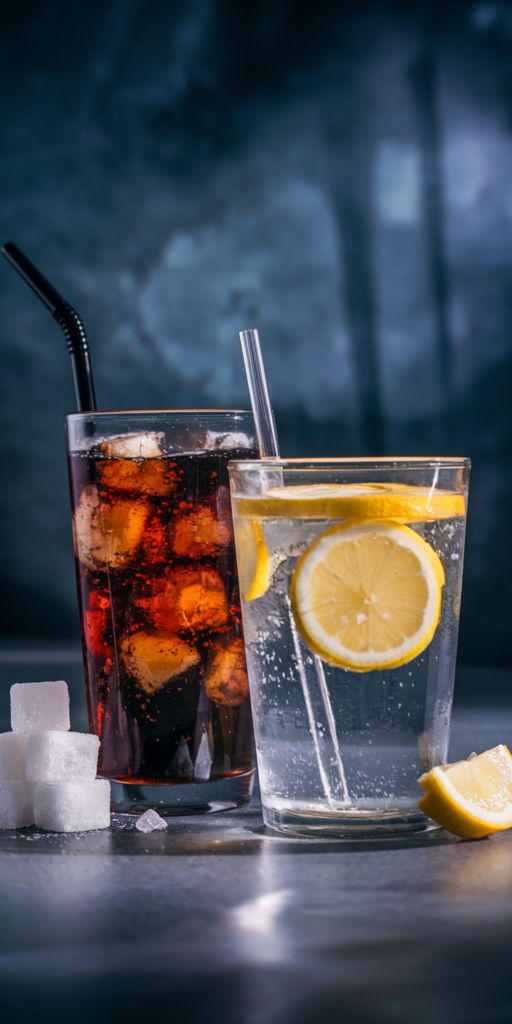
If you’re serious about losing weight, one of the quickest wins you can get is by cutting out sugary drinks and alcohol. These beverages sneak in hundreds of extra calories without actually filling you up—what nutritionists call “empty calories.”
Unlike solid food, liquid calories don’t signal to your brain that you’re full, so you can down a soda, a sweetened coffee, or a cocktail and still feel hungry right after. Over time, this adds up and stalls fat loss.
Think about it: a single 16-ounce soda can pack 200+ calories and over 40 grams of sugar, while a fancy café latte with syrup can easily top 300–400 calories. Alcohol is no better.
A glass of wine averages 120–150 calories, a beer runs 150–200, and mixed cocktails often exceed 300 calories per drink. Have a few in one sitting, and you’ve blown through the calorie deficit you worked hard to create with exercise and clean eating.
Why Cutting These Drinks Helps Weight Loss
- Reduces Hidden Calories: You’ll be shocked how fast weight loss kicks in once you cut out liquid calories.
- Prevents Sugar Spikes: Sugary drinks cause rapid blood sugar spikes and crashes, leading to cravings and overeating later.
- Supports Better Sleep & Recovery: Alcohol disrupts sleep quality and slows down muscle recovery after workouts.
- Improves Hydration: Swapping soda or cocktails for water keeps your body hydrated, boosts digestion, and helps your metabolism run smoothly.
Smarter Alternatives to Sugary Drinks & Alcohol
- Water First: Aim for at least 8 cups a day. If plain water bores you, infuse it with lemon, cucumber, or berries.
- Sparkling Water: Gives you that “soda feel” without sugar or calories.
- Unsweetened Tea or Coffee: Black coffee and green tea both boost metabolism and focus—skip the cream and sugar.
- Mocktails: If you miss alcohol socially, make fun mocktails using sparkling water, lime, mint, or a splash of 100% fruit juice.
- Protein Smoothies: Blend almond milk, protein powder, and spinach for a filling drink that fuels your body instead of draining it.
Pro Tips to Make It Stick
- Don’t Quit Cold Turkey (Unless You Want To): If you’re used to drinking soda daily, start by cutting back gradually—replace every other soda with sparkling water until it becomes routine.
- Save Alcohol for Special Occasions: Instead of making it a nightly habit, enjoy a drink here and there, mindfully.
- Think Long-Term: After a few weeks, your taste buds adapt—sugary drinks start to taste overly sweet, and you’ll naturally crave them less.
Bottom line: Sugary drinks and alcohol are some of the biggest culprits in hidden calorie intake.
By cutting them out—or at least cutting back—you’ll create a calorie deficit effortlessly, reduce cravings, and speed up fat loss while improving your overall health.
MEASURE SMART, LOSE FAST
This sleek Etekcity Smart Nutrition Food Scale connects to your phone and instantly reveals calories, macros, and portion size as you cook.
Skip the guesswork—track meals like a pro and lose up to 5+ lbs in a week.
Get yours for under $40 on Amazon
4. Stay Hydrated

Staying hydrated is one of the simplest yet most overlooked strategies for losing belly fat and improving overall health. Water is essential for nearly every function in your body — from regulating body temperature and transporting nutrients to flushing out toxins and supporting digestion.
When your body is properly hydrated, it functions more efficiently, allowing your metabolism to run smoothly and helping you burn more calories throughout the day.
Many people mistake thirst for hunger, leading to unnecessary snacking and extra calorie intake. Drinking enough water not only keeps your appetite under control but also makes you feel fuller, which can naturally reduce overeating and late-night cravings.
In fact, drinking a glass of water 20–30 minutes before meals has been shown to help people consume fewer calories without feeling deprived.
Hydration also plays a direct role in fat loss. The process of breaking down stored fat into usable energy, known as lipolysis, requires water.
Without adequate hydration, your body struggles to mobilize fat effectively, slowing down weight loss efforts. Additionally, staying hydrated reduces bloating and water retention, giving your stomach a flatter, leaner appearance.
Water isn’t just about weight management — it also enhances workout performance. Dehydration can lead to fatigue, dizziness, muscle cramps, and poor endurance, making it harder to push yourself during cardio or strength training sessions.
On the other hand, when you’re properly hydrated, your energy levels are higher, your muscles recover faster, and you burn more calories during exercise.
Tips to Stay Hydrated Throughout the Day:
- Drink 8–10 cups daily (around 2–2.5 liters), but adjust based on your activity level, climate, and body size.
- Start your morning with water to jumpstart your metabolism after hours of sleep.
- Have a glass before meals to promote fullness and prevent overeating.
- Carry a reusable water bottle and sip consistently instead of chugging large amounts at once.
- Flavor your water naturally with lemon, lime, cucumber, mint, or berries if you struggle with plain water.
- Choose water over sugary drinks or alcohol, which are dehydrating and add empty calories that contribute to belly fat.
- Drink herbal teas or sparkling water as low-calorie alternatives for variety.
Pro Tip:
Cold water may give your metabolism a small boost because your body expends energy warming it to body temperature. It’s not a magic fat-burning trick, but combined with a calorie deficit, it can make a difference over time.

Track 13 Key Body Metrics & Transform Your Fitness Journey – Get Results You Can See!
Shop the Etekcity Smart Scale Now
5. Increase Daily Activity

When most people think about losing belly fat, they picture long gym sessions or intense workouts.
While structured exercise is important, one of the most effective (and often underrated) ways to burn more calories is simply increasing your daily activity level outside of the gym.
This concept is known as NEAT (Non-Exercise Activity Thermogenesis) — all the calories you burn through movement that isn’t considered formal exercise, such as walking, cleaning, gardening, or even standing instead of sitting.
Why does this matter? Because NEAT can account for a huge portion of your daily calorie burn.
For example, someone who moves often throughout the day — walking, taking the stairs, stretching, or standing at their desk — can burn hundreds of extra calories daily without ever stepping foot in the gym.
Over weeks and months, that calorie burn adds up, helping you shed belly fat more efficiently.
Beyond weight loss, moving more throughout the day also improves circulation, reduces stiffness, and keeps your metabolism active.
Even small movements keep your body engaged, which is especially important if you spend long hours sitting at a desk or in front of a screen.
Practical Ways to Increase Daily Activity:
- Walk more: Aim for 8,000–10,000 steps per day. Break it up into short walks after meals or use walking meetings instead of sitting.
- Take the stairs: Skip the elevator whenever possible. Stairs are a quick calorie-burner and strengthen your legs and core.
- Stand more often: Use a standing desk or set reminders to stand up every 30–60 minutes.
- Do mini workouts at home: Knock out a few squats, push-ups, or jumping jacks during breaks.
- Stretch regularly: Not only does stretching burn a little energy, but it also improves flexibility and blood flow.
- Park farther away: Whether at the grocery store or office, choose a parking spot that forces you to walk a little extra.
- Household chores count: Cleaning, mopping, gardening, and even cooking all burn calories and contribute to fat loss.
- Dance or play with kids/pets: Fun activities raise your heart rate without feeling like exercise.
Pro Tip:
If you struggle to remember to move, set a timer on your phone or smartwatch that reminds you to get up and move every hour. Even just 2–3 minutes of walking or stretching per hour adds up over the day.
Consistency is key — these small bursts of activity may not feel like much, but combined with a healthy diet and regular exercise, they create the calorie deficit needed to lose belly fat faster.
6. Do HIIT or Strength Training

When it comes to burning stubborn belly fat, not all workouts are created equal. Two of the most effective training styles you can add to your routine are High-Intensity Interval Training (HIIT) and Strength Training.
Both methods torch calories, boost metabolism, and help your body burn fat long after you’ve finished exercising.
High-Intensity Interval Training (HIIT)
HIIT involves alternating between short bursts of intense activity (like sprinting, burpees, or jump squats) and brief periods of rest or light movement.
This style of training pushes your body to its limits, forcing it to burn a significant amount of energy in a short time.
The real magic happens after your workout — your metabolism stays elevated for hours, a phenomenon called EPOC (Excess Post-Exercise Oxygen Consumption), meaning you continue burning calories long after you’re done.
Benefits of HIIT for Belly Fat:
- Burns more calories in less time compared to steady cardio.
- Improves cardiovascular fitness while building lean muscle.
- Triggers fat loss around the midsection by targeting visceral fat.
- Can be done with little to no equipment — bodyweight exercises work perfectly.
Sample HIIT Circuit (20 minutes):
- 30 seconds sprint (or high knees)
- 30 seconds rest
- 30 seconds burpees
- 30 seconds rest
- 30 seconds mountain climbers
- 30 seconds rest
- Repeat for 4–5 rounds
Strength Training
Many people assume cardio is the only way to burn belly fat, but strength training is just as important — if not more. Lifting weights (or using resistance bands and bodyweight exercises) builds lean muscle, which increases your resting metabolic rate (RMR).
This means the more muscle you have, the more calories your body burns all day, even while resting.
Benefits of Strength Training for Belly Fat:
- Builds lean muscle that boosts metabolism long-term.
- Increases strength and improves body composition (more muscle, less fat).
- Strengthens your core, improving posture and reducing back pain.
- Prevents the muscle loss that often happens during calorie restriction.
Example Strength Training Routine (3 days a week):
- Squats – 3 sets of 12 reps
- Dumbbell Bench Press – 3 sets of 10 reps
- Deadlifts – 3 sets of 8 reps
- Overhead Shoulder Press – 3 sets of 10 reps
- Plank Hold – 3 rounds of 30–60 seconds
Pro Tip:
The best approach is to combine both HIIT and strength training. For example, do 2–3 days of strength workouts and 1–2 days of HIIT each week. This mix helps you burn fat, preserve muscle, and sculpt a leaner midsection faster than cardio alone.
Consistency matters most. Stick with either method, fuel your body with the right nutrition, and belly fat loss will follow.
Connect with Apps, Unlock Secret Mode & Reach Your Goals Faster!
Get Yours on Amazon Now
7. Improve Sleep Quality

Sleep is often the missing piece in the weight-loss puzzle, especially when it comes to reducing belly fat. Even if you follow a perfect diet, drink plenty of water, and exercise consistently, poor sleep can sabotage your results.
Research shows that inadequate or low-quality sleep disrupts hormones that regulate hunger and appetite, increases cravings for sugary and high-calorie foods, and slows down metabolism.
Two key hormones are affected by sleep:
- Ghrelin: The hunger hormone. Lack of sleep increases ghrelin levels, making you feel hungrier.
- Leptin: The satiety hormone. Poor sleep decreases leptin, so you feel less satisfied after meals.
Together, these changes can lead to overeating, late-night snacking, and weight gain, particularly around the midsection.
Why Sleep Matters for Belly Fat Loss
- Regulates Hormones: Proper sleep balances hunger and fullness hormones.
- Supports Recovery: Sleep allows your muscles to repair and grow after strength training or HIIT sessions.
- Reduces Cortisol: Chronic sleep deprivation raises cortisol (the stress hormone), which is linked to belly fat accumulation.
- Boosts Energy & Motivation: Well-rested individuals are more likely to stick to their workouts and make healthier food choices.
Tips to Improve Sleep Quality
- Stick to a Consistent Schedule: Go to bed and wake up at the same time every day, even on weekends.
- Create a Sleep-Friendly Environment: Keep your bedroom cool, dark, and quiet. Use blackout curtains or a white noise machine if needed.
- Limit Screens Before Bed: The blue light from phones, computers, and TVs can interfere with melatonin production. Try to unplug at least 30–60 minutes before bedtime.
- Avoid Caffeine & Alcohol Late in the Day: Both can disrupt deep sleep cycles.
- Establish a Relaxing Routine: Read a book, take a warm bath, or do light stretching or meditation before bed to signal your body it’s time to sleep.
- Exercise Earlier: Working out during the day helps improve sleep, but intense evening workouts may interfere with falling asleep for some people.
Pro Tip: Aim for 7–9 hours of quality sleep per night. Consistently getting enough rest not only supports weight loss but also improves focus, mood, and overall health.
8. Avoid Processed & Fast Foods
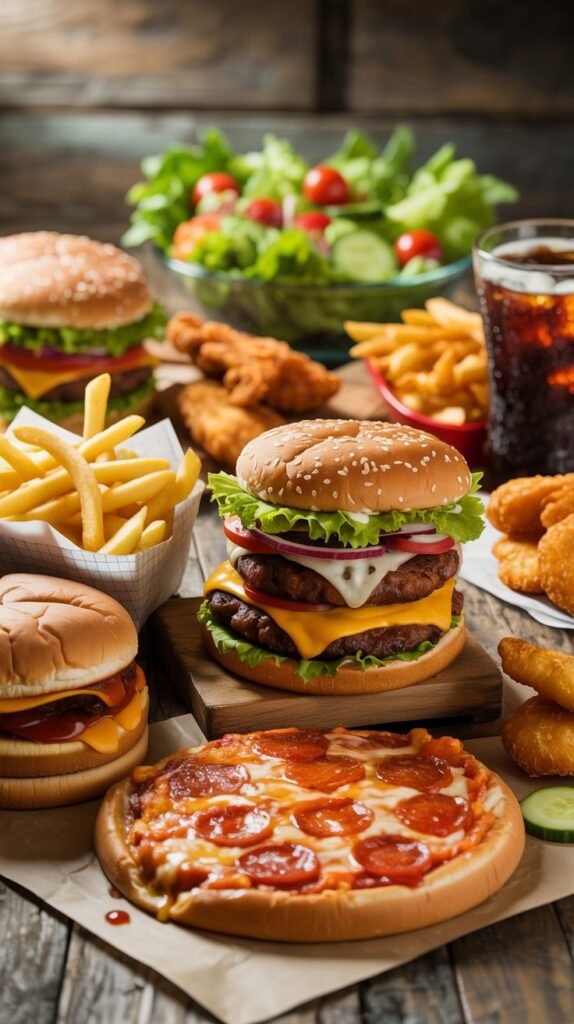
When it comes to losing belly fat, one of the biggest game-changers is cutting out processed and fast foods.
These convenient options may save time, but they are often packed with added sugars, unhealthy fats, refined carbs, and excess sodium—all of which can stall weight loss and increase belly fat over time.
Unlike whole foods, processed meals are engineered to taste good but don’t provide the satiety your body needs, making it easy to overeat without realizing it.
Fast foods are especially problematic. A single fast-food meal can contain more calories than you should consume in an entire day, and it often lacks the fiber, protein, and micronutrients that keep you full and energized.
Regularly eating these foods not only contributes to fat gain but also affects blood sugar, insulin sensitivity, and overall health.
Why Avoiding Processed Foods Matters
- Reduces Empty Calories: Processed foods often contain hidden sugars, trans fats, and refined carbs that add calories without nutrition.
- Controls Blood Sugar: Minimizing refined carbs helps prevent insulin spikes, which can encourage fat storage around the midsection.
- Supports Gut Health: Whole, unprocessed foods feed beneficial gut bacteria, improving digestion and metabolism.
- Enhances Satiety: Whole foods like vegetables, fruits, lean proteins, and whole grains keep you full longer, making it easier to stick to a calorie deficit.
Practical Tips to Cut Processed Foods
- Cook at Home: Preparing meals from scratch lets you control ingredients, portions, and cooking methods.
- Read Labels: Look for foods with minimal ingredients and avoid items with added sugars, hydrogenated oils, and artificial additives.
- Batch Prep: Make healthy meals in advance so you’re not tempted by fast food when you’re busy or hungry.
- Healthy Swaps:
- Swap packaged chips for air-popped popcorn or roasted chickpeas.
- Replace sugary cereals with oatmeal topped with nuts and berries.
- Choose grilled or baked options over fried foods.
- Plan Ahead: Keep healthy snacks like nuts, fruit, or Greek yogurt on hand to prevent reaching for processed convenience foods.
Pro Tip: You don’t have to be perfect—treat processed or fast foods as occasional indulgences rather than staples. The more you focus on whole, nutrient-dense foods, the easier it becomes to maintain a calorie deficit and see results in your belly fat reduction journey.
9. Manage Stress & Cortisol Levels

Stress is more than just a mental burden—it has a direct impact on belly fat and overall weight management. When you’re stressed, your body produces cortisol, a hormone that, in high levels, encourages fat storage around your midsection.
Chronic stress can also trigger emotional eating, cravings for sugary or high-calorie foods, and irregular meal patterns, all of which work against your weight-loss goals.
Cortisol affects the body in several ways: it increases appetite, slows metabolism, and promotes the storage of visceral fat (the deep belly fat that surrounds your organs).
Over time, consistently elevated cortisol can make it harder to lose fat, even if you’re eating well and exercising regularly.
Why Managing Stress Matters
- Reduces Belly Fat: Lowering cortisol levels helps prevent excess fat accumulation around your midsection.
- Supports Better Sleep: Stress often interferes with sleep, which in turn affects hunger hormones and fat loss.
- Improves Food Choices: When stress is under control, you’re less likely to reach for processed, sugary, or comfort foods.
- Enhances Workout Performance: Stress management helps you stay focused, energized, and consistent with your exercise routine.
Practical Ways to Manage Stress
- Exercise Regularly: Strength training, cardio, yoga, and even daily walks help reduce cortisol and release endorphins.
- Practice Mindfulness or Meditation: Even 10–15 minutes a day of deep breathing, guided meditation, or mindfulness can lower stress levels.
- Get Adequate Sleep: Poor sleep increases stress, so aim for 7–9 hours per night.
- Limit Caffeine & Alcohol: Excess caffeine and alcohol can exacerbate stress and disrupt hormone balance.
- Connect with Others: Social support from friends, family, or support groups helps reduce stress and improves mental well-being.
- Take Breaks: Short, regular breaks during work or study sessions reduce mental fatigue and cortisol spikes.
- Engage in Hobbies: Activities you enjoy, like reading, gardening, or listening to music, help relax your mind and body.
Pro Tip: Stress management is just as important as diet and exercise. By keeping cortisol levels in check, you’ll improve your ability to lose belly fat, sleep better, and stay consistent with healthy habits.
**Ready to stop eyeballing your meals?**
This smart scale gives you full control over portion sizes and macronutrient tracking—no extra apps needed.
Order the same scale I recommend on Amazon right now
10. Track Your Progress
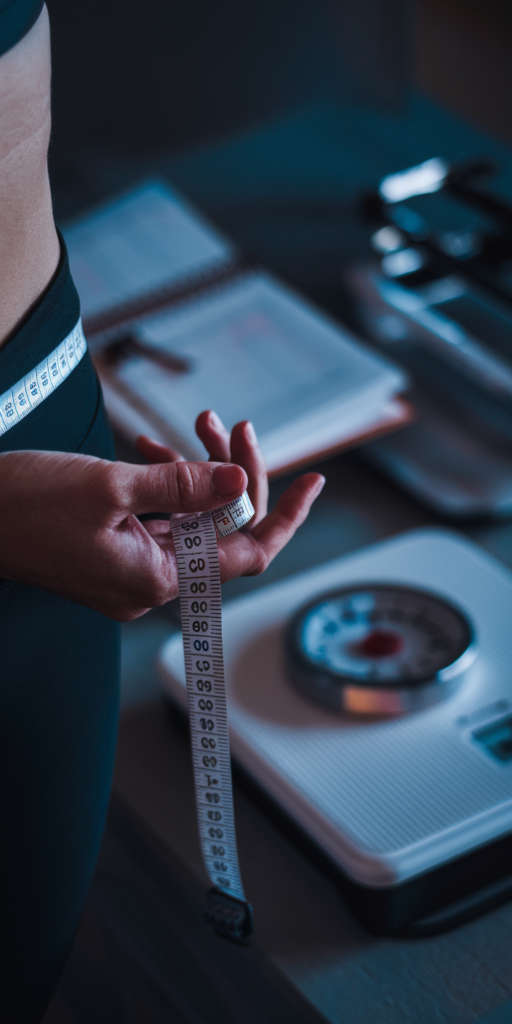
Tracking your progress is a crucial but often overlooked step in losing belly fat and achieving long-term results. Without monitoring your efforts, it’s easy to underestimate small successes or overlook areas that need improvement.
Keeping track helps you stay accountable, adjust your plan, and celebrate wins, which boosts motivation and consistency.
Progress isn’t just about the number on the scale. Fat loss, especially around the belly, can happen slowly, and muscle gain or water fluctuations can mask changes in weight.
That’s why a comprehensive approach to tracking includes multiple indicators: body measurements, photos, fitness performance, and even how your clothes fit.
Why Tracking Progress Matters
- Keeps You Accountable: Writing down workouts, meals, and daily habits helps you stick to your plan.
- Reveals Patterns: Tracking food intake, exercise, and sleep can highlight behaviors that hinder progress, like hidden snacking or skipped workouts.
- Motivates You: Seeing improvements, even small ones, keeps you motivated to continue.
- Helps Adjust Your Plan: If you’re not seeing results, tracking allows you to tweak your diet, exercise, or lifestyle habits accordingly.
Practical Ways to Track Your Progress
- Use a Journal or App: Note workouts, calories, meals, and water intake. Apps like MyFitnessPal or Fitbod can make this easier.
- Take Body Measurements: Track waist, hip, chest, arm, and thigh measurements weekly. This shows changes that the scale might not reflect.
- Progress Photos: Take photos every 2–4 weeks under the same lighting and clothing to visually track fat loss and muscle definition.
- Fitness Performance: Record your strength gains, endurance improvements, or number of reps/sets completed.
- Clothing Fit: Notice how your clothes feel—looser jeans or tighter sleeves on a shirt are signs of progress even if the scale hasn’t moved.
Pro Tip: Don’t obsess over daily fluctuations—they can be influenced by water retention, sodium intake, or hormonal changes. Instead, focus on weekly or biweekly trends for a more accurate picture of your progress.
Tracking consistently gives you insight, motivation, and control over your fat-loss journey, making it easier to reach your goals and maintain results long-term.
Frequently Asked Questions (FAQs)
1. How long does it take to lose belly fat?
Belly fat loss varies depending on diet, exercise, genetics, and consistency. On average, a safe and sustainable rate is 1–2 pounds per week. Visible changes in belly fat may take 4–12 weeks, especially if you’re combining a calorie deficit with strength training and daily activity.
2. Do I need to do crunches to lose belly fat?
No. Spot reduction (losing fat from one specific area) is largely a myth. Crunches and core exercises strengthen abdominal muscles but won’t burn belly fat alone. Fat loss happens through overall calorie deficit, nutrition, and a combination of cardio, strength, and high-intensity workouts.
3. Can I still eat carbs while trying to lose belly fat?
Yes! Carbs aren’t the enemy. The key is choosing high-quality, unprocessed carbs like oats, quinoa, sweet potatoes, and vegetables while limiting refined carbs and sugary foods. Pairing carbs with protein and fiber helps control blood sugar and appetite.
4. How important is sleep for losing belly fat?
Extremely important. Poor sleep disrupts hunger hormones (ghrelin and leptin), increases cravings for sugary foods, and raises cortisol levels, which promotes belly fat storage. Aim for 7–9 hours of quality sleep per night to support fat loss.
5. How often should I exercise to see results?
For general fat loss, aim for 3–5 days of exercise per week, combining strength training, HIIT, and daily activity. Consistency is more important than intensity alone. Even walking, standing more, and moving throughout the day contributes significantly to calorie burn.
6. Are supplements necessary for belly fat loss?
No supplement is required to lose belly fat. A balanced diet, calorie deficit, hydration, exercise, and sleep are far more effective. Supplements like protein powder can be convenient for meeting protein goals but are not magic fat burners.
7. Can stress really affect belly fat?
Yes. Chronic stress elevates cortisol levels, which encourages fat storage, particularly around the midsection. Managing stress through exercise, meditation, deep breathing, or hobbies is crucial for long-term fat loss.
8. How can I track my belly fat loss effectively?
Use a combination of:
- Measurements: Waist, hip, and other body measurements weekly.
- Photos: Progress photos every 2–4 weeks.
- Fitness markers: Track strength, endurance, or reps.
- Clothing fit: Notice how your clothes feel over time.
9. Can I lose belly fat without dieting?
Diet plays the largest role in fat loss. While exercise helps burn calories and build muscle, calorie control through whole, nutrient-dense foods is essential for significant belly fat reduction.
10. What is the best approach to maintain results long-term?
Sustainable results come from:
- Consistent calorie management
- Regular exercise (strength + cardio + NEAT)
- Adequate sleep and stress management
- Tracking progress and adjusting habits as needed
- Avoiding extreme diets or temporary fixes
Pro Tip: Focus on creating a healthy lifestyle rather than chasing quick fixes. Combining all the strategies—nutrition, activity, sleep, stress management, and tracking—produces lasting results and improves overall health.
Final Thoughts
Losing belly fat isn’t about quick fixes, crash diets, or endless hours on the treadmill. It’s about building sustainable habits that work with your body, not against it.
By combining a balanced, high-protein diet, regular strength training and HIIT, increased daily movement, proper hydration, quality sleep, and stress management, you create the perfect environment for fat loss while supporting your overall health.
Remember, fat loss takes time and consistency. Some weeks you may see rapid progress, while other weeks it may feel slower—but that’s completely normal.
Tracking your progress, celebrating small wins, and adjusting your plan when necessary are key to staying motivated and on track.
The most important takeaway is that small, consistent changes add up over time.
Each healthy meal, extra walk, quality night of sleep, and mindful choice contributes to reducing belly fat and improving your energy, confidence, and overall well-being.
Key Reminders:
- Focus on whole, unprocessed foods and prioritize protein.
- Keep moving throughout the day and stay active outside the gym.
- Strength training and HIIT are essential for building muscle and boosting metabolism.
- Sleep and stress management are as critical as diet and exercise.
- Track your progress to stay accountable and motivated.
By following these strategies consistently, you’re not just losing belly fat—you’re building a healthier, stronger, and more energized version of yourself for the long term.
